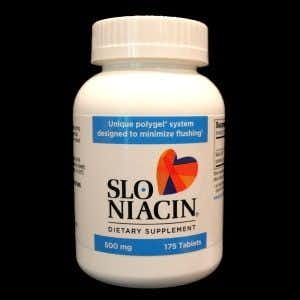
Q. I am taking niacin 1000 mg to improve my good cholesterol. I get a hot flash about 20 minutes later that lasts about 15 minutes.
Is this normal? My doctor recommended niacin since the bad LDL cholesterol is fine but the good HDL is too low.
A. Niacin (vitamin B3, or nicotinic acid) has been prescribed for more than 50 years. (At the doses required to produce results, niacin must be considered a medicine and its use should be supervised by a physician.) A landmark study published in 1986, the Coronary Drug Project, tracked heart attack victims for 15 years. Men who had been prescribed niacin had substantially fewer repeat heart attacks and 11 percent fewer deaths. The benefit persisted for many years, even after they stopped taking the niacin.
Despite the fact that niacin has been prescribed for decades to improve lipid profiles, researchers still do not understand exactly how it works this magic. Niacin lowers bad LDL cholesterol by anywhere from 15 to 40 percent. Triglycerides also come down significantly. Niacin is one of the few compounds that reduces Lp(a) and raises good HDL cholesterol by 10 to 20 percent.
Best of all, niacin is inexpensive. Compared to today’s powerful prescription drugs, niacin is a steal. A 2-month supply can cost one-tenth as much as the same amount of a statin-type medication. Of course, at the doses that are required to lower cholesterol and reduce the risk of heart disease, medical supervision is essential. Liver function must be monitored periodically to detect any enzyme elevation that might signal damage. Doses that are prescribed range from 300 to 500 milligrams at the low end to up to 3,000 milligrams at the high end. Only a physician can determine the most appropriate dose and supervise safe treatment.
Niacin frequently causes flushing, itching and tingling about 20 minutes after swallowing it. Some doctors suggest taking a low-dose aspirin 30 minutes before niacin to diminish the hot flashes. Food may also slow absorption and reduce the discomfort.
To learn more about natural approaches to cholesterol control and triglyceride management we suggest our book, The People’s Pharmacy Quick & Hand Home Remedies from National Geographic. It discusses the benefits of cinnamon, Certo and grape juice, oatmeal and barley, red yeast rice, vinegar and walnuts. You will also get a recipe for an unusual smoothie containing orange juice, diced banana, frozen berries, raw rolled oats and flaxseed meal. One woman reported that this recipe lowered her son’s total cholesterol as well as his bad LDL cholesterol while raising his HDL cholesterol.

